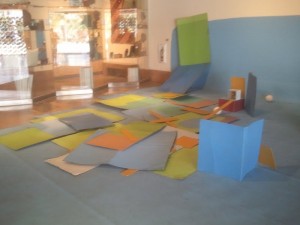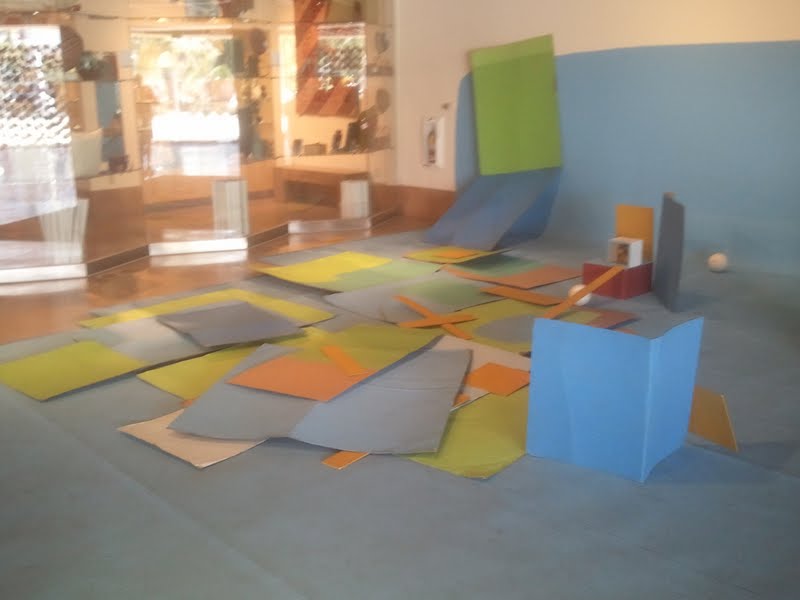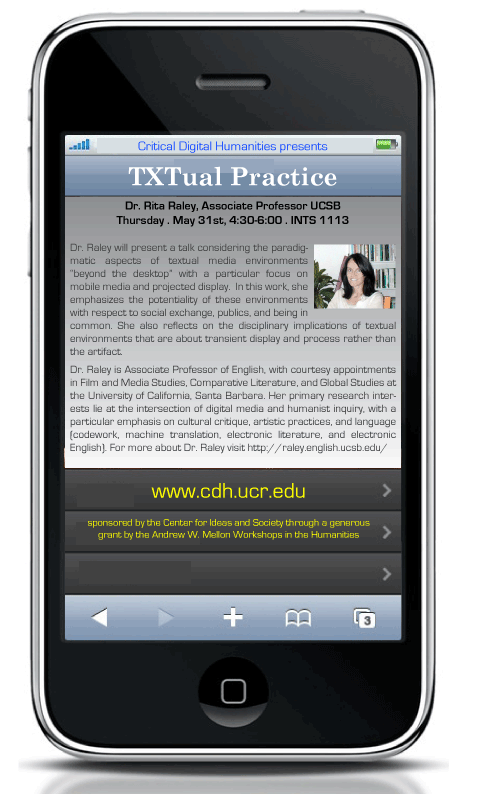SLSA 2013 CALL FOR PAPERS
The 27th Annual Meeting of the Society for Literature, Science, and the Arts (SLSA)
VENUE: The Campus of the University of Notre Dame
DATES: October 3-6, 2013
PAPER PROPOSAL DUE DATE: May 1, 2013
NOTIFICATION OF ACCEPTANCE: June 15, 2013
SLSA 2013 Site Organizer: Laura Dassow Walls, University of Notre Dame (lwalls@nd.edu)
Program Chair: Ron Broglio, Arizona State University (ronbroglio@gmail.com)
CONFERENCE THEME: POSTNATURAL?
What does it mean to come “after” nature? In 2012, Arctic ice melted to the lowest level in human history; with ice everywhere in retreat, island nations are disappearing, species vectors are shifting, tropical diseases are moving north, northern natures-cultures are moving into extinction. Acidification of ocean water already threatens Northwest shellfish farms, while historic wildfires, droughts, floods, and shoreline erosion are the norm. Reality overshoots computer models of global warming even as CO2 emissions escalate. Yet none of this has altered our way of living or our way of thinking: as Fredric Jameson noted, we can imagine the collapse of the planet more easily than the fall of capitalism. What fundamental reorientations of theory—of posthumanity and animality, of agency, actants, and aporias, of bodies, objects, assemblages and networks, of computing and cognition, of media and bioart—are needed to articulate the simple fact that our most mundane and ordinary lives are, even in the span of our own lifetimes, unsustainable? If we have never been natural, are we now, at last, ecological?
Proposals and papers on the theme or on any other SLSA-related topic are welcome. Proposed topics may take up any work in literature and science, history of science, philosophy of science, science and art, or science studies. “Postnatural” has been chosen as a theme to organize ongoing conference threads and to invite a range of proposals from various dimensions of ecocriticism and environmental literature and history.
Presentation proposals will be accepted through the SLSA website http://www.litsci.org, beginning in February, 2013. Individual proposals consist of a 250-word abstract with title. Pre-organized panels for consideration can contain an additional summary paragraph along with proposed session title.
SLSA MEMBERSHIP: Participants in the 2013 conference must be 2013 members of the Society for Literature Science and the Arts. For more information about SLSA, please visit the organization website at www.litsci.org.
Rhetoric and Critical Digital Humanities Scholarship: Re-thinking Interactions with Digital Scholarship in terms of Agency, Rhetorical Address, and Reception
What are the rhetorical assumptions made by “digital media scholarship” or the “digital humanities” in both the design and delivery of digital research? How are distinct rhetorical modes or histories entangled in, or excluded from, the interface and interaction designs developed for digital research projects and their presentation?
This year the Critical Digital Humanities research group begins with this fundamental question and our projects will work toward a consideration of the various impacts and affects of digital media.
For the 2012 – 2013 academic year, CDH will focus on what digital media’s particular language or discourse does, and how that language acts in relation to questions of agency. We will explore the rhetoric surrounding the digital humanities and the deployment of that rhetoric in the affective and commonplace experiences that drive digital media practices. CDH events will examine the primary tropes employed in digital media rhetoric as well as their subtexts, and how these factors allow us to think through digital media as an embodied practice.
One of the most common tropes of digital media is its claim of power – the power to democratize the social sphere, resulting in the increased agency of the user. However, in many ways, the construction and circulation of agency in digital media seems to serve the drives of neoliberalism rather than the individual.
Remix practices, interactivity, and social media all present opportunities for resistance to the challenges of neoliberal ideology, and the Critical Digital Humanities research collective will rethink notions of agency through practices of becoming and emergence within digital media.
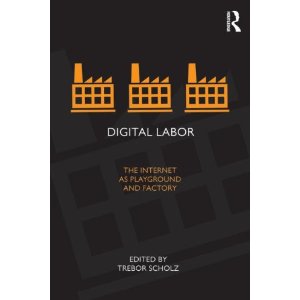 Digital Labor: The Internet as Playground and Factory
Digital Labor: The Internet as Playground and Factory
Edited by Trebor Scholz
Digital Labor asks whether life on the internet is mostly work, or play. We tweet, we tag photos, we link, we review books, we comment on blogs, we remix media, and we upload video to create much of the content that makes up the web. And large corporations profit on our online activity by tracking our interests, affiliations, and habits—and then collecting and selling the data. What is the nature of this interactive ‘labor’ and the new forms of digital sociality that it brings into being? The international, interdisciplinary contributors to Digital Labor suggest that there is no longer a clear divide between ‘the personal’ and ‘work,’ as every aspect of life drives the digital economy: sexual desire, boredom, friendship—and all become fodder for speculative profit. They argue that we are living in a total labor society and the way in which we are commoditized, racialized, and engendered is profoundly and disturbingly normalized by the dominant discourse of digital culture. Digital Labor poses a series of questions about our digital present: How is the global crisis of capitalism linked to the hidden labor of the digital economy? How do we address that most online interaction, whether work or play, for profit or not, is taking place on corporate platforms? How can we acknowledge moments of exploitation while not eradicating optimism, inspiration, and the many instances of individual financial and political empowerment? In response to these questions, this collection offers new definitions of digital labor that address and challenge the complex, hybrid realities of the digital economy.
Introduction: Trebor Scholz Why Does Digital Labor Matter Now? I. The Shifting Sites of Labor Markets
1. Andrew Ross On the Digital Labor Question
2. Tiziana Terranova Free Labor
3. Sean Cubitt The Political Economy of Cosmopolis
4. McKenzie Wark Considerations on A Hacker Manifesto II. Interrogating Modes of Digital Labor
5. Ayhan Aytes Return of The Crowds: Mechanical Turk and Neoliberal States of Exception
6. Abigail De Kosnik Fandom as Free Labor
7. Patricia Clough The Digital, Labor and Measure Beyond Biopolitics
8. Jodi Dean Whatever Blogging III. The Violence of Participation
9. Mark Andrejevic Estranged Free Labor
10. Jonathan Beller Digitality and The Media of Dispossession
11. Lisa Nakamura Don’t Hate the Player, Hate the Game: The Racialization of Labor in World of Warcraft IV. Organizing Networks in an Age of Vulnerable Publics
12. Michel Bauwens Thesis on Digital Labor in an Emerging P2P Economy
13. Christian Fuchs Class and Exploitation on the Internet
14. Ned Rossitter and Soenke Zehle Acts of Translation: Organizing Networks as Algorithmic Technologies of the Common
Sound Art and the Transborder Digital Memorial: Luz María Sánchez’ “2487” at the Riverside Art Museum
September 19th, 2012
Carolyn Schutten
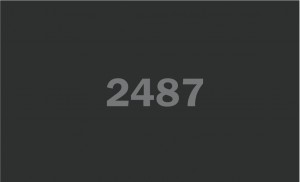 In conjunction with the Riverside Art Museum’s exhibition You Are Breathing in It: Alternative Art Practices (YABII), Luz María Sánchez’ 2487, a stereo installation from an 8-channel sound piece, is currently on exhibit in the RAM Alcove Hallway. The sound art installation was curated by Carolyn Schutten, a PhD student in public history from UCR, who took part in the Riverside Art Museum Student Curatorial Council (RAMSCC) pilot program.
In conjunction with the Riverside Art Museum’s exhibition You Are Breathing in It: Alternative Art Practices (YABII), Luz María Sánchez’ 2487, a stereo installation from an 8-channel sound piece, is currently on exhibit in the RAM Alcove Hallway. The sound art installation was curated by Carolyn Schutten, a PhD student in public history from UCR, who took part in the Riverside Art Museum Student Curatorial Council (RAMSCC) pilot program.
2487 speaks the names of the two thousand four hundred eighty seven people who died crossing the U.S./Mexico border . The work employs digital technology and sound as a means for transborder memorialization and protest, imposing the absence of those lost into the public sphere. Sánchez’ immersive sound environment remaps social history as the names of the deceased fly across the border through soundscape and digital media. Drawing from data acquired from activist websites, Sánchez created a sound map of names which she recorded digitally. Her final score, along with the database, has been exhibited widely but lives permanently on the world wide web, in commemoration and quiet protest. Sánchez’ work connects the digital and geographic landscape to the listener’s body, gaining entry through sound and transcending political and physical barriers.
Curator Carolyn Schutten will speak about 2487 and the curatorial process, along with the other RAMSCC students, during a panel discussion on September 21 at 6:00 pm. To RSVP please call 951-684-7111 or e-mail Exhibit Liaison Kathryn Poindexter at: ramexhibitions@riversideartmuseum.org.
2487 will be on exhibit from August 9 – September 26, 2012 in the Riverside Art Museum Alcove Hall. YABII will close on September 22, 2012.
For more information on Sánchez sound project, visit: www.diaspora2487.org
Luz María Sánchez’ 2487 was originally commissioned by Artpace San Antonio as part of the International Artist-in-Residence program New Works: 06.2, curated by Yuko Hasegawa, Chief Curator, Museum of Contemporary Art, Tokyo, Japan.
April Durham . 17 August 2012
Long Beach is about 20 minutes southwest of the crumbly LA neighborhood where I am spending a sticky-baked summer. I am too tired to drive and Pam prefers to pilot anyway. It’s already needle hot when we leave at 10:23 am. The 110 to the 5 to the 60 to the 710. Aquarium exit to Broadway to Alamitos. The parking lot is mostly empty and (finally) a sea breeze teases us toward the door. The space is so professional, so institutionally proper, with excellent air conditioning, gleaming floors, and very quietly polite security guards. The museum avoids the obvious tropes of Latino-ism, tropical frescoes, colorful tile, dense installation. Instead, minimal institutional space sanctions resistance, creating a strange, almost discomfiting celebration the ways in which its constituency creatively reflects on its experience of the world: a globalized, not-particularly-supportive, often-exploitative world.
Why interactivity? The term implies, these days, a high level of technological
interface, a mediating of the “natural” world by the tools of the cyber terrain. But there are only two pieces with an overtly technological structure: Deep Thought V.2, by Dream Addictive, brings to mind boardwalk fortune telling machines, where touching bolt-like “sensors” connect the traveller to a machine that renders thoughts as biofeedback, eventually spitting out a slip of paper with a Spanish interpretation of the imagination. The other involves sitting inside a little oval hut made from egg cartons and waving hands in front of sensors that emit the sounds of the Tijuana streets. Neither of these pieces functions with the slick, fault-proof necessity of the digital interface though. The sense is that they repeat where they should progress or they reset because the physical touch is too tenuous, issuing faults or making frailty and apparatic vulnerability transparent to that of the “natural” human. Fear of too much interface drives the interaction with these works more than a streamlining of the meat-to-machine we’ve grown to expect à la Sleep Dealer.
An air bladder made from pages of An Introduction to Psychoanalysis and  other books by Freud that the viewer can enter, a candy-finish painting the viewer can touch, and a wall of plastic funerary flowers to which the viewer can add. Only uncertainly interactive, these works seem shy and tentative, failing to invite the masterful engagement humans are used to exercising with their digital partners (AKA computers or games). Appearing as traditional sculptures, the viewer hesitates to touch. The guards stand by looking pointedly to see if you will touch, in fact. But beautifully trained, they kindly, gently encourage, lifting edges, coax the shedding of various bits of clothing, soothingly offer instructions on precisely how to interact.
other books by Freud that the viewer can enter, a candy-finish painting the viewer can touch, and a wall of plastic funerary flowers to which the viewer can add. Only uncertainly interactive, these works seem shy and tentative, failing to invite the masterful engagement humans are used to exercising with their digital partners (AKA computers or games). Appearing as traditional sculptures, the viewer hesitates to touch. The guards stand by looking pointedly to see if you will touch, in fact. But beautifully trained, they kindly, gently encourage, lifting edges, coax the shedding of various bits of clothing, soothingly offer instructions on precisely how to interact.
Pressing on the slick sunset finish of Rubén Ortiz-Torres’ painting, you see the shadow of your hand beside that of your friend and then it fades as if you were never there. The nature of this interactivity is not immersive, not consuming in the way a Gibsonian, jacked-in cybersurfer (or an MMORPG player) experiences/becomes. Rather, it is consuming in the way of a penetrating
glance cast by a stranger in a dark public gathering place that catches the receiver in the middle of the chest and is long remembered, even though it was perhaps the most momentary experience of one’s life. The lingering questions: who, why, what… transmitted in the print, the look, the air between ebb and flow through Memory, layered upon the fading imprint of body heat cast by whatever number of viewers dared to touch the same surface.
If interactivity, in today’s online gaming world and even for more pedestrian users like bloggers, vloggers, and social networkers, implies a certain machine-to-human-to-human interaction, with a performative component, the interactive quotient of these works is shockingly “lo-tek.” The concerns of high and low, however, are shared: what does it mean to navigate the political, aesthetic, and social (aren’t they the same in a way?) terrains of shared space/time? Is is possible to witness the “Other’s” sensations/cognitions, material-semiotic struggles, mediated in objects, subjectivities, and histories encountered in the  institutional setting (be that the museum or Google Chrome)? What is the nature of that connection? How to describe it? Faulty, tenuous, vulnerable, pedantic, shrill, violent, contained, noisy, ephemeral, colored, blocked, or elegiac? What about gaps, glitches, non-functionality, errors, obviousness, inelegance, and awkwardness? Does my interface accommodate embarrassment, illiteracy, clumsiness, incompetence? While the stakes in on-line interactivity hinge on these last attributes being ameliorated through the discipline of practice, the works in this show leverage the incapacity of the viewer to prepare her laboring body for skilled engagement. Frailty and inability are prized when succumbing to the floating weight of Freud’s knowledge or the faux-foliage of funerary decor of Alberto Baraya.
institutional setting (be that the museum or Google Chrome)? What is the nature of that connection? How to describe it? Faulty, tenuous, vulnerable, pedantic, shrill, violent, contained, noisy, ephemeral, colored, blocked, or elegiac? What about gaps, glitches, non-functionality, errors, obviousness, inelegance, and awkwardness? Does my interface accommodate embarrassment, illiteracy, clumsiness, incompetence? While the stakes in on-line interactivity hinge on these last attributes being ameliorated through the discipline of practice, the works in this show leverage the incapacity of the viewer to prepare her laboring body for skilled engagement. Frailty and inability are prized when succumbing to the floating weight of Freud’s knowledge or the faux-foliage of funerary decor of Alberto Baraya.
The nest built by Franklin Cassaro of pages from books by Sigmund Freud, taped together with plastic packing material, breathes a welcome to its strange interior. “I could lie in here all day,” says my companion. “Yeah,” I sigh. Highly legible but impossible to “read,” these familiar texts, so important to 20th century thought, culture, and social/psychical understanding float around like a  breathing womb, a lung-abyss that allows in light, receives the air from a rotating fan just outside, but does not encourage exit. Even the kindly young guard who so attentively lifts the edge so you can enter, is nowhere to be found when you want to leave. You have to struggle against the rigidity (however frail) of the tape, and the concern for damaging the already creased and worried edges of the text, to trip out awkwardly and straighten your skirt, and wonder about who might notice your dirty knees. While deliciously inviting, the interactivity solicited by this work is precarious, and if not imprisoning, then certainly sticky and all the more maddening thanks to its beauty.
breathing womb, a lung-abyss that allows in light, receives the air from a rotating fan just outside, but does not encourage exit. Even the kindly young guard who so attentively lifts the edge so you can enter, is nowhere to be found when you want to leave. You have to struggle against the rigidity (however frail) of the tape, and the concern for damaging the already creased and worried edges of the text, to trip out awkwardly and straighten your skirt, and wonder about who might notice your dirty knees. While deliciously inviting, the interactivity solicited by this work is precarious, and if not imprisoning, then certainly sticky and all the more maddening thanks to its beauty.
In the lobby of the museum, Federico Herrero offers the closest thing to immersive interactivity in a piece comprised of old, painted cardboard, little boxes, sticks, and styrofoam balls, all dusty and a bit decrepit. This work  “translates the mix of colors, shapes, and forms of the streets of San José, Costa Rica—and the tropical landscape that surrounds the city, onto gallery walls,” or so says the museum website. The artist offers a little space, like that in a preschool, where components that might be used to make the throw-away artworks that fascinate my friend and me, comprising each of our own art practices (differently but in a shared context) can be moved around at will, bent, walked upon, hidden under, stacked. I reach out and move a stick as we pass by the jumble and a little tower of stuff tumbles over, almost landing on my foot. Interactivity can be dangerous, first lesson. I look to see if the security guard is ready to wrestle me to the ground, but he goes on checking things on a list and ignores me. “Pam,” I whisper. “I think we can play.” Pam, of course, doesn’t need another nudge and begins dealing out slabs of wasted cardboard in various shades of green in piles that appear random but which are governed by her highly honed aesthetic sense. I move some sticks and a ball into a tight grid at one corner. Then I make a little ramp and hope a ball will roll down it.
“translates the mix of colors, shapes, and forms of the streets of San José, Costa Rica—and the tropical landscape that surrounds the city, onto gallery walls,” or so says the museum website. The artist offers a little space, like that in a preschool, where components that might be used to make the throw-away artworks that fascinate my friend and me, comprising each of our own art practices (differently but in a shared context) can be moved around at will, bent, walked upon, hidden under, stacked. I reach out and move a stick as we pass by the jumble and a little tower of stuff tumbles over, almost landing on my foot. Interactivity can be dangerous, first lesson. I look to see if the security guard is ready to wrestle me to the ground, but he goes on checking things on a list and ignores me. “Pam,” I whisper. “I think we can play.” Pam, of course, doesn’t need another nudge and begins dealing out slabs of wasted cardboard in various shades of green in piles that appear random but which are governed by her highly honed aesthetic sense. I move some sticks and a ball into a tight grid at one corner. Then I make a little ramp and hope a ball will roll down it.
We stay here the longest, really playing, really having fun and never at all intimidated, cautioned, or constrained by the fact that we are professional artists, serious women, not-super young, creative urchins lingering between the spaces sanctioned for play and those made political by the kind of gesture exercised within-upon them. We wonder for a moment, loving cardboard, thinking about fish, wishing it could stay this way, desire unmediated in a falling-down structure that is oh so pretty all the same.
crossposted at cyberurchin
CFP: “The History and Future of Data Visualization” (Digital Humanities Caucus)
July 31st, 2012
April Durham
Assistant Professor
School of Literature, Communication, and Culture
Georgia Institute of Technology
Atlanta, GA 30332-0165
lauren.klein@lcc.gatech.edu
A Digital Media and Learning Research Competition on Badging and Badge Systems Development
In March 2012, the Digital Media and Learning Competition on Badges for Lifelong Learning (supported by the John D. and Catherine T. MacArthur Foundation and the Bill and Melinda Gates Foundation) awarded 30 development grants to support the creation of digital badges and badge systems that contribute to, identify, recognize, measure, and account for new skills, competencies, knowledge, and achievements for 21st century learners wherever and whenever learning takes place.
We seek research proposals that support and inform the design, development, and deployment of the digital badges and badge systems in any of these categories:
The Digital Media and Learning Badges for Lifelong Learning general category, which supported the development of badges and badge systems across a diverse range of content, institutions, and approaches.
Project Mastery awards focusing on the efficacy of badging systems for learning at Gates Foundation supported Project Mastery sites (School District of Philadelphia, Adams County School District 50, Asia Society). Project Mastery projects promote learning that is mastery based and Common Core aligned. The aim is to support new learning and knowledge, real-world outcomes like jobs, credit for new skills and achievements, and whole new ways to level up in their life and work.
Teacher Mastery badge projects that track and promote feedback regarding the competencies, skills programs and subjects over which teachers acquire expertise. These include systems for recognizing and rewarding some of the capacities, skills and content needed to effectively teach math, literacy, or digital literacy skills and/or to effectively teach to the Common Core State Standards. n March 2012, the Digital Media and Learning Competition on Badges for Lifelong Learning (supported by the John D. and Catherine T. MacArthur Foundation and the Bill and Melinda Gates Foundation) awarded 30 development grants to support the creation of digital badges and badge systems that contribute to, identify, recognize, measure, and account for new skills, competencies, knowledge, and achievements for 21st century learners wherever and whenever learning takes place.
We seek research proposals that support and inform the design, development, and deployment of the digital badges and badge systems in any of these categories:
The Digital Media and Learning Badges for Lifelong Learning general category, which supported the development of badges and badge systems across a diverse range of content, institutions, and approaches.
Project Mastery awards focusing on the efficacy of badging systems for learning at Gates Foundation supported Project Mastery sites (School District of Philadelphia, Adams County School District 50, Asia Society). Project Mastery projects promote learning that is mastery based and Common Core aligned. The aim is to support new learning and knowledge, real-world outcomes like jobs, credit for new skills and achievements, and whole new ways to level up in their life and work.
Teacher Mastery badge projects that track and promote feedback regarding the competencies, skills programs and subjects over which teachers acquire expertise. These include systems for recognizing and rewarding some of the capacities, skills and content needed to effectively teach math, literacy, or digital literacy skills and/or to effectively teach to the Common Core State Standards.
Click here for full CFP and project information: http://dmlcompetition.net/Competition/4/research-development.php
Please join us for one of the final events of our exciting digital year.
Dr. Rita Raley, Associate Professor at UCSB will present on the possibilities for social exchange in textual media environments, focusing on hand-held devices.
Thursday, May 31
4:30-6 pm
INTS 1113
Refreshments served!
Dr. Raley’s talk will move “beyond the desktop,” with a particular focus on mobile media and projected display. In this work, she emphasizes the potentiality of these environments with respect to social exchange, publics, and being in common.
She also reflects on the disciplinary implications of textual environments that are about transient display and process rather than the artifact. Dr. Raley is Associate Professor of English, with courtesy appointments in Film and Media Studies, Comparative Literature, and Global Studies at the University of California, Santa Barbara. Her primary research interests lie at the intersection of digital media and humanist inquiry, with a particular emphasis on cultural critique, artistic practices, and language (codework, machine translation, electronic literature, and electronic English).
For more about Dr. Raley visit: http://raley.english.ucsb.edu/
UCLA Postdoctoral Position
One-year appointment beginning August 2012; possible renewal for up to two more years. Review of applications begins May 15; submission deadline is May 30, 2012.
We seek a postdoctoral researcher for a three-year research project, entitled The Transformation of Knowledge, Culture, and Practice in Data-Driven Science: A Knowledge Infrastructures Perspective
http://knowledgeinfrastructures.gseis.ucla.edu/index.html
We are conducting ethnographic and interview research about digital data practices among scientists about their research design and data collection, data analysis, data management, and data sharing with colleagues and the public. The project sites are four distributed data-driven research projects, two of which are ramping up their activities and two of which are ramping down.
The project is funded by the Sloan Foundation Digital Information Technology Program. http://www.sloan.org/program/28
The principal investigator is Christine Borgman, Information Studies, UCLA
http://is.gseis.ucla.edu/cborgman/
http://works.bepress.com/borgman/
The co-principal investigator is Sharon Traweek, Gender Studies/History, UCLA
http://www.womensstudies.ucla.edu/faculty_traweek.html
http://www.history.ucla.edu/traweek/
The postdoctoral researcher will participate actively in the collaboration, including the design, conduct, and analysis of interviews and ethnographic fieldwork. The postdoctoral researcher will gain experience in collaborative research, research project organization, and digital data research practices. The project is based at the University of California at Los Angeles (UCLA) and residence nearby is required for the duration of the postdoctoral research appointment. Some travel is required for research and conferences.
We prefer applicants with
* ethnographic and interview research experience, and
* substantial knowledge of research in the interdisciplinary fields of Science, Technology, and Society studies (STS) and Information Studies.
The starting salary is $50,000 per year, plus benefits
http://www.gdnet.ucla.edu/gss/postdoc/pdleave.htm
The work is to be done 12 months of the year, excluding university holidays; the postdoctoral researcher is entitled to 24 paid personal days and 12 paid sick days per year. For further information about postdoctoral appointments at UCLA: http://www.gdnet.ucla.edu/postdocs.html
UAW Local 5810 is the Union for over 6,000 Postdoctoral Researchers at the University of California. http://uaw5810.org/
Submit statement of interest, qualifications, CV, and list of three references to Sharon Traweek traweek@history.ucla.edu
or Christine Borgman borgman@gseis.ucla.edu
http://knowledgeinfrastructures.gseis.ucla.edu/docs/SloanPostdoc_BorgmanTraweek_Announce.pdf



